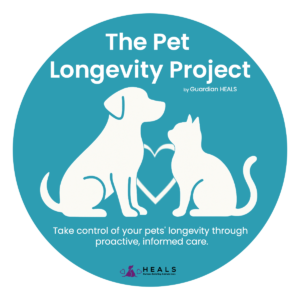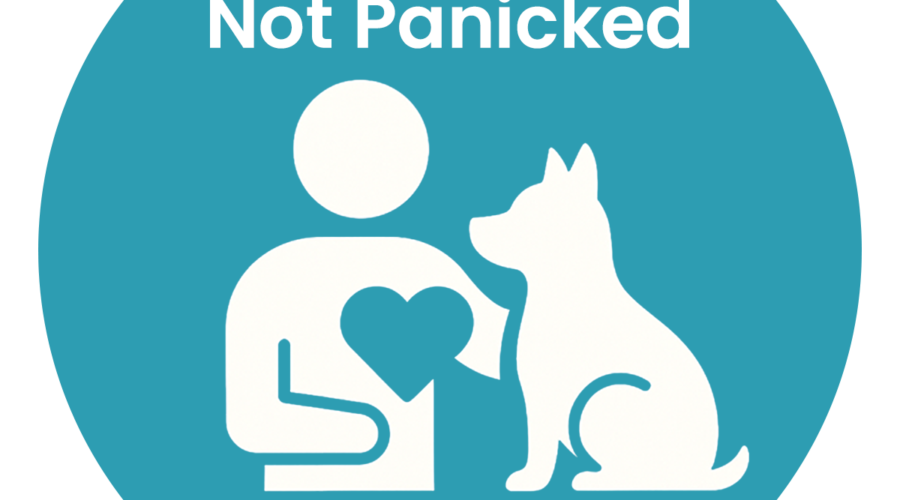Hazy, Hot, and Humid? Hot Dog? Beware of Heatstroke.
The joys of summer are not without some serious caveats: Beware of the deadly risks of
heatstroke in your pets. It’s been widely publicized in the last few years: Don’t leave your
pets in a parked car–not even for just a few minutes–as temperatures rapidly rise. This life-
saving message bears repeating now: A parked car can heat up like an oven in a short
period of time in the very hot weather–putting pets at risk of deadly heatstroke.
Signs of heatstroke
Recognizing the signs and taking prompt action can help save your pet’s life:
Body temperature of 104-110 degrees F
Excessive panting
Dark or bright red gums and tongue
Bloody diarrhea or vomiting
Staggering
Stupor
Seizures
Take quick action
These signs can progress to coma and death–so seek emergency veterinary medical
attention fast. If you are unable to do so, here are a few steps you can take in the meantime
to help your pet:
• Get out of the sun right away and get into the closest shaded area.
• Use cool–not cold–water to cool your pet down.
• Do not cool your pet down below 103 degrees as they can become too cool too quickly
and this causes more harm.
• You can offer ice to your animal, but don't force them to eat or drink if they aren’t
interested.
Seek veterinary assistance ASAP
However, after taking those steps, if your animal is cooled and appears to be fine, don’t
assume everything is fine–because it’s not! Internal organs such as the liver, kidneys, and
brain can be affected by the body temperature elevation your pet experienced. A veterinary
examination and blood work will be needed to make sure your pet is really okay.
Hot tips
If you see an animal locked in a car in the heat, immediately call the local police or
animal control officer and/or the store manager (if it’s in a mall or retail parking lot).
If you are traveling with your pet and need to stop, use drive-up windows and shop
at stores that will allow you to bring your pet inside.
Walk your dog in the early morning and later evening hours when the temperatures
are not as high.
Bring water and a portable pet bowl should your pet get thirsty while out in the hotter
temps.
Remember, as the saying goes, “If it’s too hot for you, it’s too hot for your pets.”
HEALS hopes that the only hot dogs you’ll have this summer are on the grill and the only
strokes you’ll see are the swimming kind. Remember to keep the phone number of your
nearest veterinary emergency facility handy. Enjoy the coveted season and stay safe!
HEALS is one of the best animal charities to donate to. Your donation provides financial
help for pets in need of life-saving veterinary care–when their owners truly can’t afford it–
right here in your own community. If you need help to pay for dog or cat veterinary care,
contact us at 914-996-0001 or email info@healspets.org.











 Old man winter packs a punch of frigid weather risks for pets and antifreeze poisoning is among the worst of them. HEALS wants everyone to know that when a pet ingests antifreeze (ethylene glycol or EG) it’s a medical emergency that can result in acute kidney failure and death.
Old man winter packs a punch of frigid weather risks for pets and antifreeze poisoning is among the worst of them. HEALS wants everyone to know that when a pet ingests antifreeze (ethylene glycol or EG) it’s a medical emergency that can result in acute kidney failure and death. Twelve to 24 hours after a dog or cat has gotten into antifreeze, the initial signs appear to resolve, but underlying internal damage continues. Elevated heart rate, increase breathing effort, and dehydration may start to develop.
Twelve to 24 hours after a dog or cat has gotten into antifreeze, the initial signs appear to resolve, but underlying internal damage continues. Elevated heart rate, increase breathing effort, and dehydration may start to develop.

 “There is nothing better than adding a dog or cat to our lives, but there are so many people out there who are dealing with emotional and financial distress,” says Dr. Berg. “HEALS was founded because many people can’t afford the veterinary care and the financial surprises of having a pet. But, oftentimes, it’s a surprise because instead of researching the responsibilities of pet ownership, it may be a spontaneous purchase or adoption and people may not realize this is a long-term commitment.”
“There is nothing better than adding a dog or cat to our lives, but there are so many people out there who are dealing with emotional and financial distress,” says Dr. Berg. “HEALS was founded because many people can’t afford the veterinary care and the financial surprises of having a pet. But, oftentimes, it’s a surprise because instead of researching the responsibilities of pet ownership, it may be a spontaneous purchase or adoption and people may not realize this is a long-term commitment.” 


Recent Comments